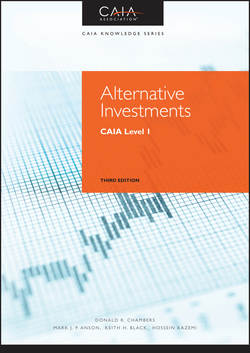Читать книгу Alternative Investments - Hossein Kazemi - Страница 58
На сайте Литреса книга снята с продажи.
PART One
Introduction to Alternative Investments
CHAPTER 3
Quantitative Foundations
Review Questions
Оглавление1. What is the general term denoting compound interest when the interest is not continuously compounded?
2. What is the primary challenge that causes difficulty in calculating the return performance of a forward contract or another position that requires no net investment? How is that challenge addressed?
3. Consider a position in a single forward contract. What distinguishes a fully collateralized position in this forward contract from a partially collateralized position?
4. An IRR is estimated for a fund based on an initial investment when the fund was created, several annual distributions, and an estimate of the fund's value prior to its termination. What type of IRR is this?
5. An investment has two solutions for its IRR. What can be said about the investment and the usefulness of the two solutions?
6. Two investments are being compared to ascertain which would add the most value to a portfolio. Both investments have simplified cash flow patterns of an initial cost followed by positive cash flows. Why might the IRRs of the investments provide an unreliable indication of which would add more value?
7. An analyst computes the IRR of one alternative to be 20 % and another to be 30 %. When the analyst combines the cash flows of the two alternatives into a single investment, must the IRR of the combination be greater than 20 % and less than 30 %?
8. Is an IRR a dollar-weighted return or a time-weighted return? Why?
9. In which scenario will a clawback clause lead to payments?
10. What is the difference between a hard hurdle rate and a soft hurdle rate?
